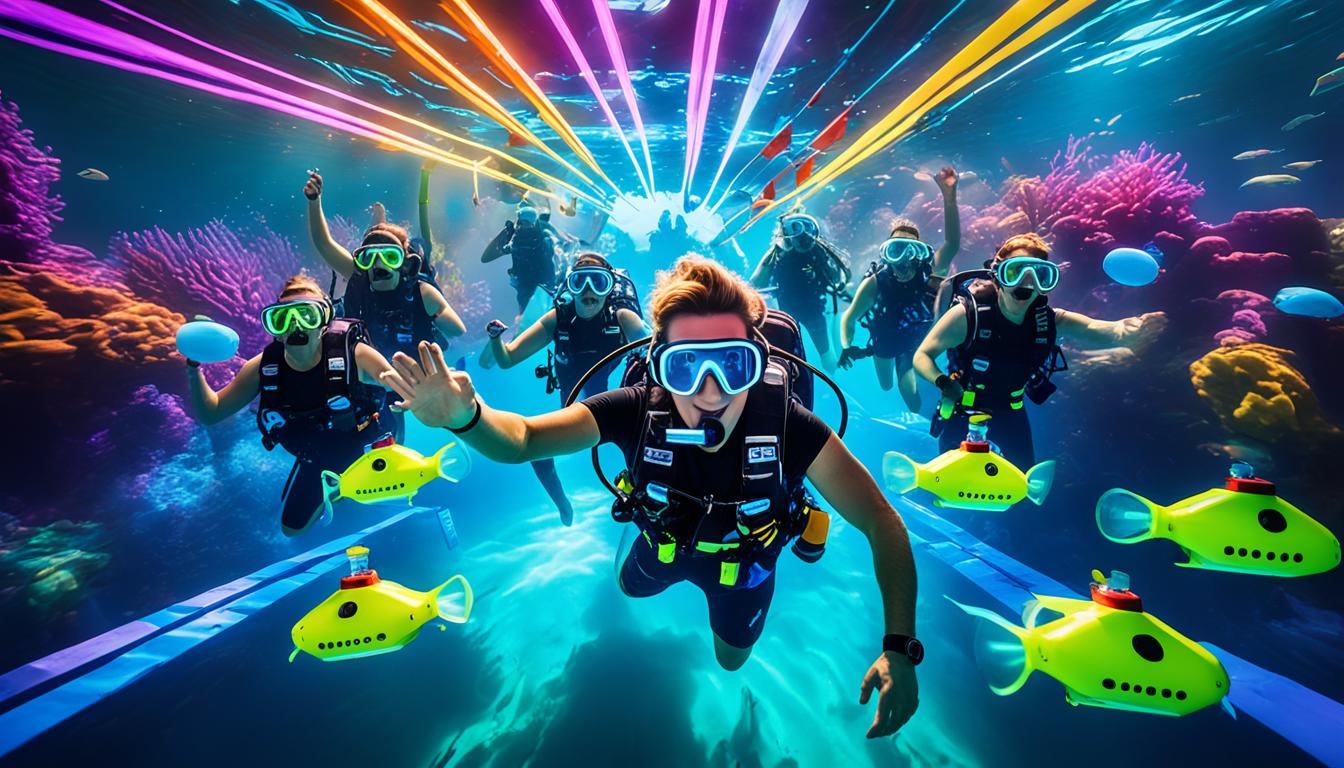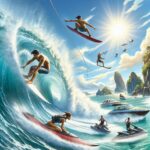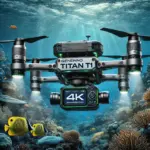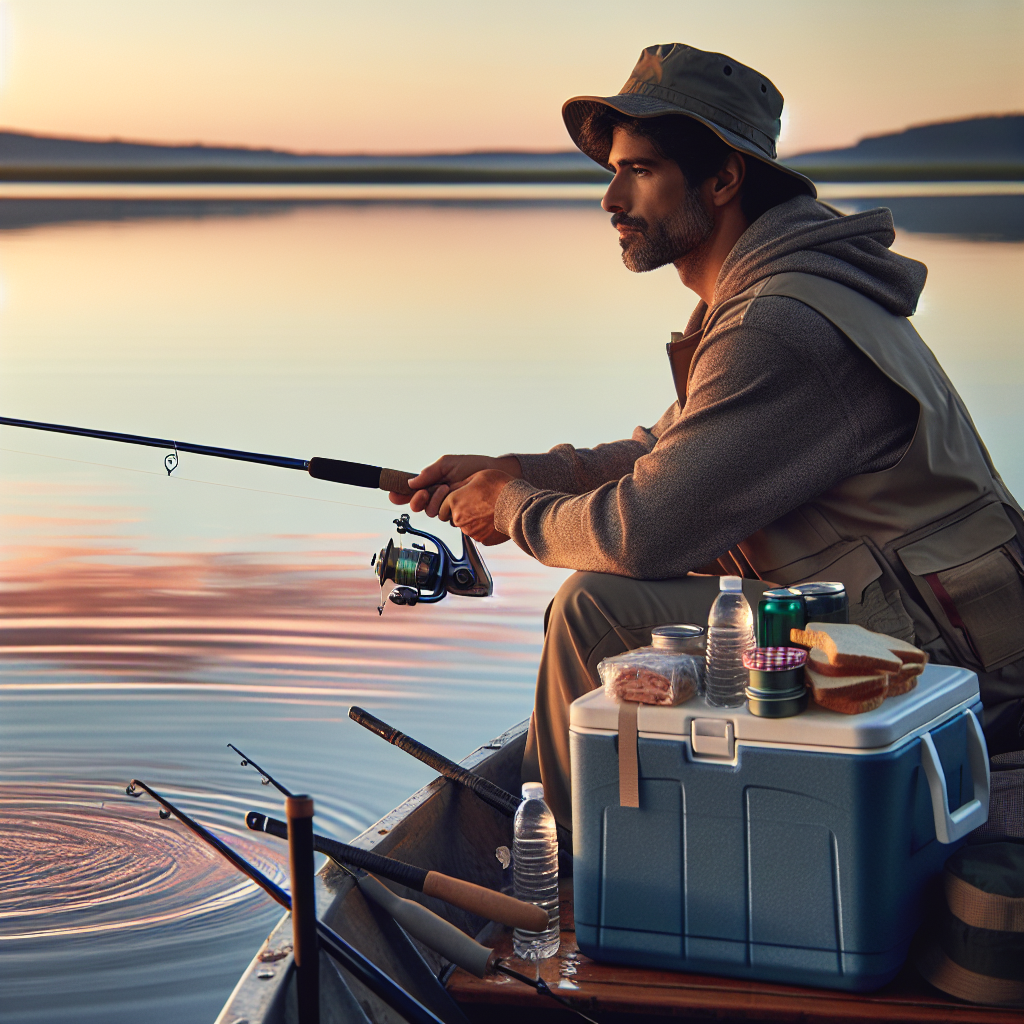
As someone who’s spent countless hours on the water, I’ve learned a thing or two about catching fish. It’s about more than just luck; it’s about knowledge, preparation, and a bit of strategy. Let’s dive right in and get those lines tight!
Key Takeaways
- Modern fishing tactics utilize sonar and GPS for precision fishing.
- Optimizing your tackle box with the right gear is crucial for success.
- Innovative lures and baits can significantly increase your catch rate.
- Understanding fish behavior and diets leads to better catch outcomes.
- Practicing sustainability and ethical fishing ensures future generations can enjoy the sport.
Let’s Dive into Modern Fishing Tactics
Discovering New Horizons on the Water
Fishing is an ever-evolving sport, with new techniques and technologies surfacing regularly. The key to successful fishing is staying adaptable and always being willing to learn. Whether you’re a seasoned angler or just starting, the water has something to teach us all.
Fishing with Technology: Sonar and GPS
Today’s fishermen have a significant advantage over the anglers of yesteryear: technology. Using sonar, you can locate fish with precision by reading the underwater landscape and identifying structures where fish are likely to hide. GPS, on the other hand, allows you to mark productive spots and return to them with ease. Here’s how to leverage these tools:
- Invest in a quality fishfinder with both sonar and GPS capabilities.
- Learn to interpret sonar readings to distinguish between fish, vegetation, and bottom structures.
- Use GPS to set waypoints for fishing hotspots, so you can return to them on future trips.
Fine-Tuning Your Tackle Box
Your tackle box is your arsenal, and like any good craftsman, you need the right tools for the job. It’s not about having the most gear, but the most effective gear for the conditions you’re fishing in. Here’s what you should always have:
- A variety of hooks in different sizes for different fish species.
- Bobbers, sinkers, and swivels to adjust your line for depth and current.
- A selection of lures and baits suited to the preferences of your target fish.
Innovative Lures and Baits
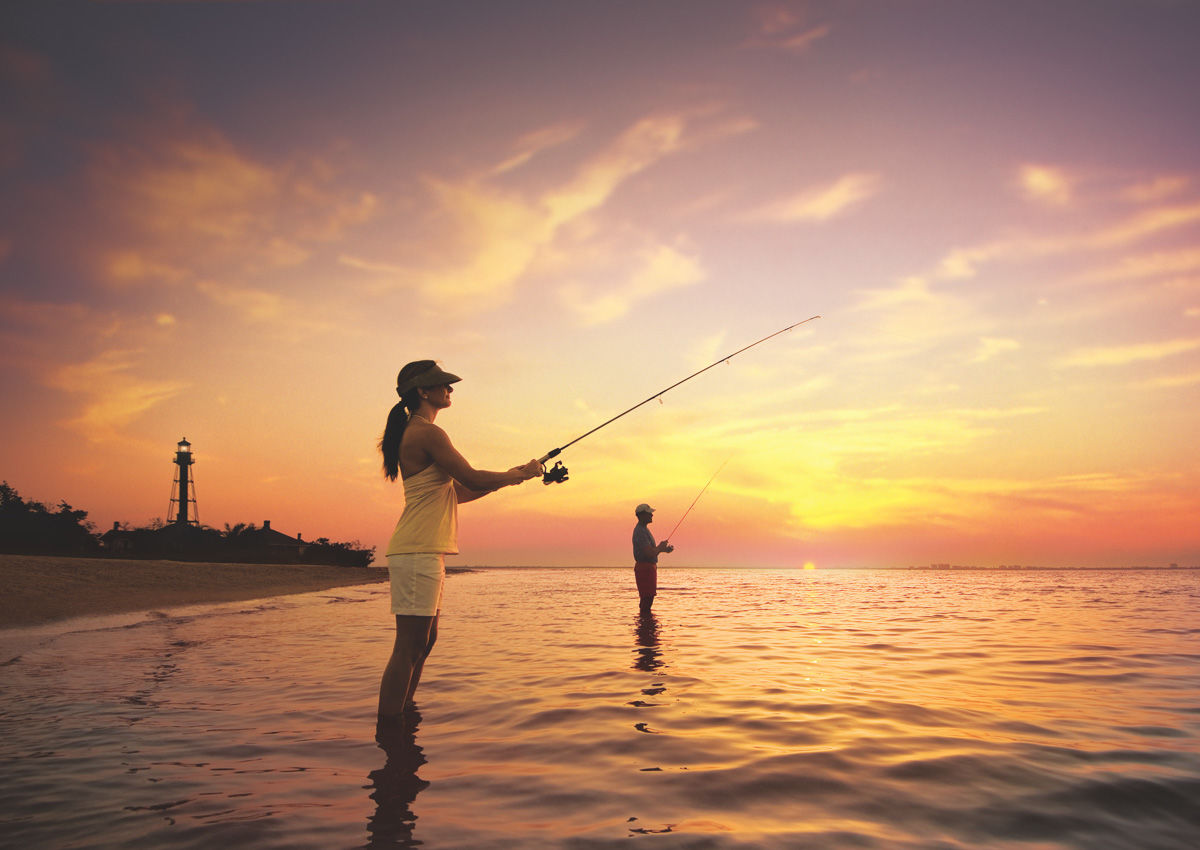
“Fishing The Beaches of Fort Myers …” from matadornetwork.com and used with no modifications.
One of the most exciting aspects of fishing is experimenting with different lures and baits. The market is always brimming with new designs intended to mimic the prey of your target species more closely. Try out soft plastic lures that look and move like real fish, or scented baits that attract fish through their keen sense of smell.
Remember, the best bait is the one that works, so don’t be afraid to switch it up if you’re not getting bites.
Crafting Your Catch: Today’s Top Techniques
Fly Fishing Futurism: Modern Twists on Classic Skills
Fly fishing is a timeless technique, but it’s not immune to innovation. Modern fly anglers can take advantage of synthetic materials for flies that are more durable and have more lifelike movements in the water. Additionally, contemporary fly rods are lighter and more responsive, allowing for greater control and precision.
Drop Shot Rigging: Precision Angling
Drop shot rigging is a technique that allows you to present your bait at a precise depth above the bottom. This method is particularly effective when fish are suspended off the bottom or when you need to fish vertically. Here’s a quick guide to setting up a drop shot rig:
- Tie a hook to your line using a Palomar knot, leaving a long tag end.
- Attach your weight to the tag end, ensuring it’s heavy enough to reach the desired depth quickly.
- Hook your bait, such as a plastic worm, through the nose to give it a natural drop and presentation.
Kayak Fishing: Navigating Tight Spots
Kayak fishing opens up a world of opportunities to access spots that larger boats can’t reach. It’s stealthy, efficient, and can be a game-changer when it comes to catching fish in shallow or densely structured areas. Make sure your kayak is equipped with rod holders and storage for your gear, and always wear a life jacket for safety.
Stay tuned for more insights, and remember, the key to a successful fishing trip is preparation, understanding your environment, and adapting to the conditions. Now, let’s get out there and make some waves!
Learning From the Pros: Pro Angler Secrets
There’s a wealth of knowledge to be gained from those who have made their mark on the water. Pro anglers have a knack for pulling in impressive catches, but it’s no accident—they use tried and tested methods, refined through years of experience. Let’s uncover some of their secrets.
Match the Hatch: Understanding Fish Diets
One of the most effective strategies is to ‘match the hatch’. This means selecting lures or bait that resemble the natural prey of the fish you’re targeting. If you’re fishing a hatch where insects are being actively consumed on the surface, for example, choose a fly that mimics those insects. Pay attention to what’s happening in the environment and adapt your bait accordingly.
Weather Patterns: Fishing in Diverse Conditions
Weather can make or break your fishing expedition. Fish behavior changes with the weather, and understanding these patterns can put you at a significant advantage. For instance, before a storm, fish often go into a feeding frenzy, while post-storm conditions might see them retreating to deeper waters. Always check the forecast and plan your strategy around it.
Adventurous Fishing Destinations
For those with a love of exploration and a thirst for the thrill that new fishing spots provide, there’s a whole world of untapped and remote waters waiting to be discovered. These destinations not only offer solitude and untouched beauty but often some of the best fishing experiences you’ll ever have.
Whether it’s the crystal-clear streams in the mountains or the deep, mysterious waters of a hidden lake, venturing off the beaten path can lead to some of the most memorable catches. Just make sure you’re prepared with the right gear and local knowledge to navigate these wild places safely.
Untapped Waters: Exploring Less-Frequented Fishing Holes
Seeking out less-frequented fishing holes can be rewarding. These spots are often overlooked gems teeming with fish unaccustomed to human presence. Use online resources, talk to local bait shops, and look for bodies of water on maps that may not be well-known but hold potential for great fishing.
Off the Beaten Path: Remote and Exotic Fishing Trips
For the ultimate adventure, consider planning a trip to a remote or exotic location. Destinations like the Amazon for peacock bass or the flats of the Bahamas for bonefish offer not just incredible fishing but also the chance to experience different cultures and environments. Just remember, the more remote the location, the more important it is to plan and prepare meticulously.
- Research local species and regulations.
- Prepare for the climate and terrain.
- Consider hiring a local guide for the best experience.
Sustainability and Ethical Fishing
Sustainability is crucial in ensuring that future generations can enjoy fishing as much as we do. As anglers, we have a responsibility to protect the environments we fish in. This means practicing ethical fishing methods, respecting local regulations, and contributing to conservation efforts.
Catch and Release Techniques
Practicing catch and release is one of the best ways to ensure fish populations remain healthy. Use barbless hooks to minimize injury to the fish, handle fish with wet hands to protect their slime coating, and return them to the water as quickly as possible to reduce stress and improve their survival chances.
The Role of Responsible Fishing in Conservation
Responsible fishing goes beyond catch and release. It’s about being mindful of the ecosystem as a whole. This includes:
- Not fishing during spawning seasons to allow fish to reproduce.
- Disposing of line and tackle properly to prevent wildlife entanglement.
- Participating in habitat restoration projects where possible.
By adhering to these practices, we not only improve our own fishing experiences but also contribute positively to the aquatic environments that we cherish so much. Now, let’s put these insights into practice and head out for an unforgettable day on the water.
Catch and Release Techniques
When you’re out on the water, every catch is a victory, but not every victory needs to end up on your dinner table. Catch and release is a practice that helps maintain fish populations and supports conservation efforts. Here’s how to do it right:
- Use barbless hooks or pinch the barbs on your hooks to make release easier and less harmful.
- Handle fish gently and keep them in the water as much as possible to avoid stress and damage to their protective slime coating.
- Avoid using a net if possible, but if you must, use one with a rubber mesh that’s less abrasive to the fish’s skin.
- Revive exhausted fish by holding them upright in the water and gently moving them back and forth until they swim away on their own.
Remember, the future of fishing depends on healthy fish populations, so practice catch and release whenever possible.
The Role of Responsible Fishing in Conservation
As anglers, we have a unique responsibility to the ecosystems we enjoy. Responsible fishing is about more than just following regulations; it’s about stewardship of our natural resources. It involves:
- Understanding local conservation laws and abiding by them.
- Participating in habitat restoration and clean-up events.
- Spreading awareness about the importance of maintaining healthy fish populations and aquatic ecosystems.
It’s our duty to ensure that the waterways we love are preserved for future generations of anglers.
Frequently Asked Questions (FAQ)
Whether you’re new to fishing or have been at it for years, you likely have questions. Here are some of the most common queries I hear on the water, along with my best advice for each.
What is the Best Time of Day for Fishing?
While fish can be caught at any time of day, the early morning and late afternoon are often the most productive. During these times, the light is softer, water temperatures are cooler, and fish are typically more active. However, the best time can vary based on the species and the season, so it’s always a good idea to do some research on your target fish.
How Can I Improve My Casting Technique?
Improving your casting technique comes down to practice, but here are a few pointers to keep in mind:
- Start with your rod tip low to the water and the line straight.
- Use your forearm and wrist in unison to create a smooth, fluid motion.
- Stop the rod at the 10 o’clock position on your backcast and at the 2 o’clock position on your forward cast.
- Practice casting in different conditions to become adaptable.
Consistency is key, so keep practicing and your casts will improve over time.
What Are Some Must-Have Items in My Tackle Box?
Your tackle box should be tailored to the type of fishing you’re doing, but there are a few essentials every angler should have:
- A variety of hooks in different sizes for different species.
- Sinkers and bobbers to adjust your line’s depth and buoyancy.
- A good selection of lures and baits that are known to work in your fishing area.
- A pair of needle-nose pliers for removing hooks.
- Line cutters or a good pair of scissors.
With these basics, you’ll be prepared for most fishing situations.
How Does Weather Affect Fish Behavior?
Weather plays a significant role in fish behavior and feeding patterns. For instance:
- Barometric pressure changes can affect fish’s swim bladders, making them more or less active.
- Overcast days often lead to longer feeding periods as the diffused light allows fish to hunt without the glare of the sun.
- Wind can stir up the water’s surface, bringing food particles closer to where fish feed.
Understanding how weather affects the fish in your area can greatly increase your chances of a successful outing.
For example, a sudden drop in pressure before a storm can send fish into a feeding frenzy, making it an ideal time to fish. Conversely, a sharp rise in pressure might mean you need to fish deeper as fish retreat to more stable conditions.
Can You Suggest Any Good Fishing Apps or Online Resources?
Absolutely! There are several apps and online resources that can help you improve your fishing game. Here are a few favorites:
- Fishbrain: A social network for anglers where you can share catches, find hotspots, and get tips from other fishermen.
- Navionics: An app that provides detailed nautical charts and features like sonar charts for locating fish-holding structures.
- Weather apps: Apps like Weather Underground or AccuWeather can help you plan your fishing trips around favorable conditions.
These tools can give you an edge, but nothing replaces local knowledge and time spent on the water.
So there you have it, a comprehensive guide to up your fishing game and embrace the role of a Wave Whisperer. With the right tactics, gear, and mindset, you’re well on your way to making your next fishing trip a resounding success. Tight lines!

